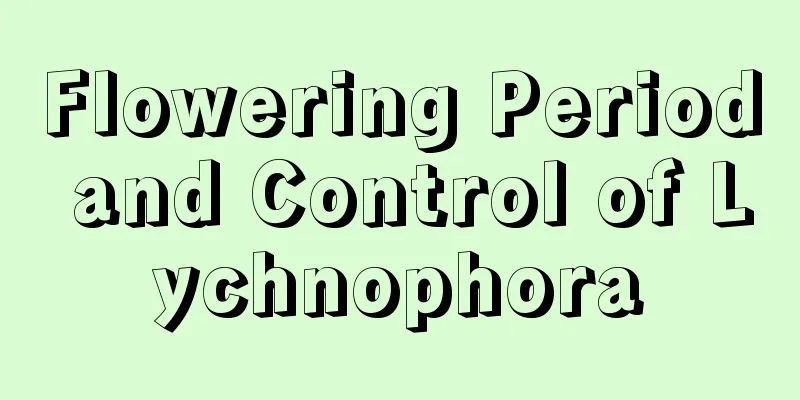Throw some of it into the water, the roots will be thicker than radishes, and all the yellow leaves will disappear!

Copper coin grass plus activated carbonMany flower lovers found that their pennyworts grown in water in the summer became wilted and their roots rotted and died within a few days. If the water quality is not good, the roots of the pennywort will easily rot. You may add a few pieces of activated carbon to the water to effectively alleviate the problem! Directions: 1. Crush the activated carbon into the size of a fingernail. It is best not to grind it into fine powder, otherwise it will be inconvenient to use. 2. You can put 4-7 pieces in a water bottle. Every time you change the water, take out the activated carbon, clean it, and dry it before using it again. Gardenia with some vitamin C solutionMany flower lovers like to plant gardenias in water to help them take root in the summer. Gardenias like acidity. If you throw a few tablets of vitamin C into the water, the gardenias will grow faster! Directions: 1. Grind the vitamin C into powder, dilute 1 gram of vitamin C with 1000-1500 times of water, stir evenly to prepare the vitamin C solution. 2. Every time you change the water for gardenia, add about 10 drops of vitamin C solution. This will not only prevent the leaves of the gardenia from turning yellow, but will also allow the roots to grow faster! Pour some magnetized water on the miniature coconutMany flower lovers will find that even though nutrient solution has been added to the miniature coconut hydroponic bottle, the plant just won’t grow! This is mainly because the root system of the dwarf coconut is not good enough and cannot absorb nutrients. Add some magnetized water and the dwarf coconut will grow faster! Directions: 1. Wrap a copper wire around a U-shaped magnet, place it in a basin of clean water, soak it for 24 hours, and the magnetized water is ready. 2. Add magnetized water to the miniature coconut hydroponic bottle. After a period of time, you will find that the miniature coconut becomes more energetic and grows a lot bigger! Add some ferrous sulfate solution to the fortune treeMany flower lovers asked Huahua, why are the leaves of the money tree green when grown in soil, but turn yellow when grown in water? This is mainly because hydroponics is prone to iron deficiency, and ferrous sulfate contains iron, which can just solve this problem! Directions: 1. Add 1 gram of ferrous sulfate to 500-800 grams of water to prepare ferrous sulfate solution. Ferrous sulfate should be light blue. If it turns yellow-brown, it has been oxidized and can no longer be used. 2. Add 6-8 drops of prepared ferrous sulfate solution into the hydroponic bottle of the money tree. Use it once every 10 days for about 3 times in a row, and the leaves of the money tree will slowly become green! Chlorophytum with rusty nailsIn addition to ferrous sulfate, rusty nails can also supplement iron elements for flowers! Rusty iron nails in water can release the iron ions needed by plants, thus preventing the leaves from turning yellow. Directions: 1. Put a rusty iron nail directly into the spider plant hydroponic bottle. If it is a rustless iron nail, it is recommended not to use it, because it is difficult to oxidize in water and has almost no effect. 2. For those who think that iron nails will affect the appearance, you can soak the rusty nails in water for a few days. After the water turns yellow-brown, take out the nails and add the soaked water into the hydroponic bottle. Add some potassium permanganate solution to green radishHydroponic green radish often suffers from root rot. Potassium permanganate is the most commonly used disinfectant by flower lovers when repotting. Adding a few drops to the hydroponic bottle can also effectively prevent the root rot and yellow leaves of green radish! Directions: 1. Add 1 ml of potassium permanganate to a mineral water bottle of water, stir evenly, and prepare potassium permanganate solution. 2. Add 20-30 drops into the green radish hydroponic bottle and shake gently to mix evenly. After 24 hours, replace the water in the hydroponic bottle with clean water, so that the roots of the green radish will not easily rot. Asparagus fern dripping with hydrogen peroxideWhen novices grow asparagus fern in water, the leaves often turn yellow and the roots rot. This is mainly caused by lack of oxygen in the hydroponic bottle, and hydrogen peroxide can effectively solve this problem. Directions: 1. Add 4-5 drops of hydrogen peroxide into the asparagus fern hydroponic bottle. Hydrogen peroxide will slowly release oxygen and increase the oxygen content, which can meet the asparagus fern's oxygen needs for a longer period of time. 2. Hydrogen peroxide also has a good bactericidal effect. It can effectively inhibit the growth of bacteria in the hydroponic bottle and prevent the roots of asparagus fern from rotting. Lucky bamboo plus aspirin solutionLucky bamboo grown in water will easily develop yellow leaves, stop growing, and sometimes even have root rot. The small aspirin tablets that you always have at home have a bactericidal effect and can promote faster rooting! Directions: 1. Crush the aspirin tablets, then add 1000 times the amount of water, stir evenly to prepare an aspirin solution. 2. Every month or so, add about 10 drops of aspirin solution to the lucky bamboo hydroponic bottle. After a period of time, you will find that the leaves of the lucky bamboo turn dark green and the roots become white and strong! I hope today's hydroponic knowledge can help you~ If you think the article is good, You can share it with your friends~ |
<<: How to grow the genus Aglaonema
Recommend
How to eat hairy lychee, pictures of hairy lychee
1. Introduction Hairy lychee, also known as rambu...
What does sending gardenias mean?
1. Eternal Love Gardenia has a flower language, w...
Cowpea planting technology and management methods
Cowpea, also known as green bean, string bean , e...
How to grow lilies
1. Breeding methods 1. Flower pot: To grow lilies...
What medicinal herbs are suitable for planting in Shandong? What precious medicinal herbs are mainly produced in Shandong?
Shandong is famous for being located to the east ...
What are the benefits of planting asparagus fern and succulents together?
The ornamental value of asparagus fern and succul...
How to grow the ground-rooted flower
1. Slightly acidic loam Slightly acidic loam is s...
How to eat coriander, the benefits of boiling coriander in water
1. How to eat 1. Cold salad: The easiest way to e...
Methods and steps for growing ginger in flower pots Methods and steps for growing ginger in flower pots
Ginger is an indispensable condiment in daily coo...
How to distinguish between Yachiyo and Otome Kokoro
1. Look at the pole Looking at the pole is the ea...
Does Epiphyllum prefer a large or small pot? What size pot is suitable?
When using a pot for Epiphyllum, you should use a...
What to do if the flowers of Kalanchoe droop
1. Normal phenomenon Reason: The flowers of Kalan...
What are the cultivation methods and precautions of Croton rotundus
Growth habit of Croton Codiaeum prefers a hot, hu...
When is the right time to plant tomatoes?
Tomato planting time Tomato, also known as tomato...
How to raise mountain turtles to make them more vigorous?
The mountain turtle tree, also known as the Brazi...









